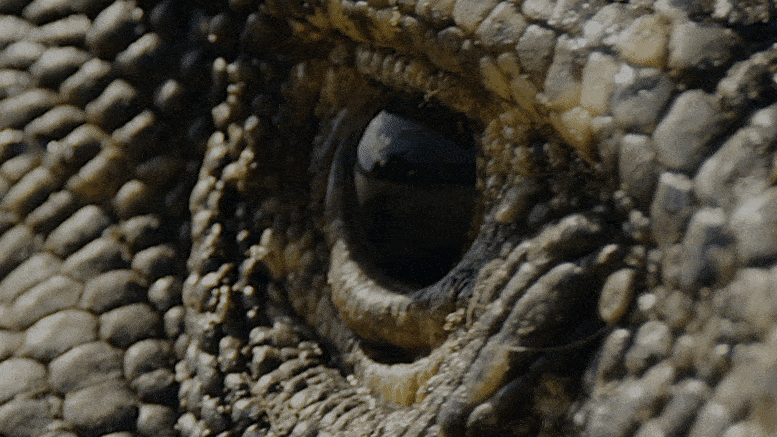Sebuah studi baru mengungkapkan bahwa kemampuan untuk mengikuti pandangan seseorang ke lokasi yang awalnya terhalang, yang dikenal sebagai pengambilan perspektif visual, kemungkinan besar berasal dari garis keturunan dinosaurus sekitar 60 juta tahun sebelum muncul pada mamalia. Kemampuan kognitif ini telah ditemukan pada beberapa spesies burung dan menunjukkan bahwa dinosaurus unggas, atau burung, memiliki neurokognisi luar biasa yang mendahului munculnya keterampilan serupa pada mamalia.
Para peneliti di Universitas Lund menemukan bahwa pengambilan perspektif visual, kemampuan kognitif untuk mengikuti pandangan yang terhalang, muncul dalam garis keturunan dinosaurus sekitar 60 juta tahun sebelum muncul pada mamalia. Temuan ini menantang anggapan bahwa kognisi kompleks berevolusi terutama pada mamalia dan menyoroti kemampuan kognitif burung dan nenek moyang dinosaurus mereka.
Ketika seseorang di dekat Anda menoleh ke arah sesuatu di lingkungan, Anda mungkin tidak bisa tidak melacak di mana pandangan mereka. Reaksi ini telah diamati pada mamalia, burung, dan bahkan reptil. Ini adalah cara yang efektif untuk mengumpulkan informasi tentang apa yang menarik perhatian kolega Anda yang mungkin Anda lewatkan. Namun, perilaku yang lebih maju adalah mengikuti pandangan seseorang ke situs yang awalnya tertutup dari pandangan Anda. Dengan memposisikan ulang diri Anda untuk melihat apa yang dilihat orang lain, Anda menunjukkan pemahaman bahwa orang lain memiliki perspektif yang berbeda. Kemampuan ini, yang dikenal sebagai pengambilan perspektif visual, berkembang pada anak-anak antara usia satu setengah hingga dua tahun, dan berfungsi sebagai dasar untuk memahami komunikasi referensial di kemudian hari dan bahwa orang lain memiliki pikiran yang berbeda dari Anda.
Pengambilan perspektif visual, sejauh ini, hanya ditemukan sangat sedikit[{” attribute=””>species. Mainly in apes and some monkeys, but also in dogs and crow birds. However, there is limited knowledge regarding the evolutionary origins of this crucial social skill. A team of researchers from Lund University aimed to investigate a potential early emergence of visual perspective taking in dinosaurs. Through a comparison of alligators with the most primitive existing birds, known as palaeognaths, they discovered that visual perspective taking originated in the dinosaur lineage likely 60 million years, or more, prior to its appearance in mammals.

Figure 1. Experimental setups of the study. Panels depict experiment setups (from left to right) for alligators, small birds (red junglefowl and elegant-crested tinamous), and large birds (emus and rheas). (A) Setups for experiment 1 (gazing up). (B) Setups for experiment 2 (gazing to the side). (C) Setups for experiment 3 (geometrical). Red dots depict stimuli used to lure demonstrators’ gazes (for more information about stimuli, see Materials and Methods). Credit: Science Advances, DOI: 10.1126/sciadv.adf0405
Crocodilians are the closest living relatives to birds. Their neuroanatomy has remained largely unchanged for hundreds of millions of years, and is similar to that of the common ancestor of dinosaurs and crocodilians. Palaeognath birds comprise the ostrich birds, such as emus and rheas, but also the flighted tinamous. Their brains are in large parts comparable to their forebearers, the non- avian paravian dinosaurs, which feature such celebrities as the velociraptors. Comparing these two groups of animals creates a bracket around the extinct lineage of dinosaurs leading up to modern birds.
The study revealed that alligators do not demonstrate visual perspective taking, although they do follow gaze to a visible location. In contrast, all tested bird species exhibited visual perspective taking. Additionally, the birds engaged in a behavior called “checking back,” where the observer looks back into the eyes of the gazer, and re-tracks the gaze, when unable to find anything in the direction of their gaze the first time. This behavior indicates an expectation that the gaze is referring to a target in the environment. Previously, this has only been observed in humans, apes and monkeys, and ravens.
Palaeognath birds emerged 110 million years ago, predating the two mammal groups endowed with visual perspective taking – primates and dogs – with 60 million years. Considering the neuroanatomical similarities between these birds and their non-avian forebearers, it is plausible that the skill originated even earlier in the dinosaur lineage. However, it is less likely to have been present among the earliest dinosaurs, which had more alligator-like brains. Maybe future research will show the ability to be more widespread among mammals than currently known, but even if that would be the case it will most probably still be predated by the dinosaur origin. Nevertheless, it is not surprising that visual perspective taking emerged earlier in the dinosaurs, which include the birds, given their superior vision compared to most mammals, that historically relied on nocturnal adaptations. It was only with the emergence of the primates and certain carnivores that our visual capabilities improved.
This is yet another finding that calls into question the prevailing view that mammals drove the evolution of complex cognition, and that they are the cognitive yardstick to which other animals should be compared. An increasing number of studies show the remarkable neurocognition of the avian dinosaurs, the birds, which might prompt a rethinking of the natural history of cognition.
Comments from the authors:
Senior author, prof. Mathias Osvath:
“Early in my career, crow birds earned the nickname “feathered apes,” due to numerous research findings that showcased their remarkable cognition. However, I’m beginning to question whether it would be more fitting to consider primates as honorary birds.”
First author (then PhD-student), Dr. Claudia Zeiträg:
“Birds are commonly being overlooked when it comes to their cognitive skills. Our findings show that they do not only have several cognitive skills on par with those of apes, but that their forebearers most likely had these skills long before they evolved in mammals.”
Middle author, Dr. Stephan Reber:
“Crocodilians are ideal models to study the evolutionary origins of cognitive capacities in birds. What they share most probably existed in the common ancestor of dinosaurs and crocodilians. If crocodilians lack an ability birds possess, it likely evolved in the dinosaur lineage after the split. This approach allows us to study the cognition of extinct species.”
Reference: “Gaze following in Archosauria—Alligators and palaeognath birds suggest dinosaur origin of visual perspective taking” by Claudia Zeiträg, Stephan A. Reber and Mathias Osvath, 19 May 2023, Science Advances.
DOI: 10.1126/sciadv.adf0405

“Pemikir jahat. Sarjana musik. Komunikator yang ramah hipster. Penggila bacon. Penggemar internet amatir. Introvert.”




